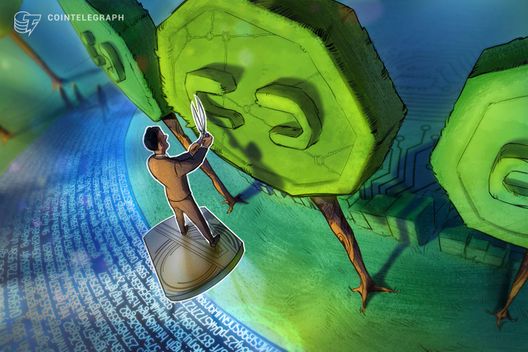Cryptocurrency and COVID-19: Bitcoin’s Path to a Safe Haven
Aren’t we all searching for a safe haven? Whether we mean literal shelter — four walls and a roof over our heads — or something more sophisticated, the craving for a dependable defense against random chaos has always been our instinct.
With the COVID-19 pandemic rearranging society at every level, the allure of a safe haven reigns supreme for our battered psyches. In the realm of financial instruments, the search for the safest of safe havens, also known as a store of value, has taken on a new urgency. Is Bitcoin (BTC) a safe haven? Will cryptocurrency prove to be a store of value above all?
Many Bitcoin believers have been confident in crypto’s ability to securely serve as a safe haven. But even the most devout blockchain boosters would admit that the coronavirus is betraying their store of value expectations, at least in the short term, as Bitcoin’s price has not remained resolute since COVID-19 became a global concern. It has exhibited big swings from around $10,000 to a low of near $4,100 in the first quarter of 2020 and now sits at approximately $9,500 at the time of this writing.
While Bitcoin has the potential to shelter value for many more of us than other safe-haven options, we will need a well-coordinated effort among the crypto community and regulators to get us there.
Bitcoin: The birth of a new safe haven
Safe havens have long played a key role in economics and investing. Traditionally, a safe haven has been an investment in an instrument expected to increase its value during market uncertainty. Safe havens add diversification to portfolios and are crucial investment strategy components for retail players and institutional investors alike.
With their deep history in serving humanity’s sense of well-being, there is not surprisingly a long list of safe havens that predate Bitcoin. These include commodities, United States Treasurys and select fiat currencies, equity strategies and hedge funds, as well as more tangible assets such as precious metals (gold and silver), real estate and even art.
Now, cryptocurrencies have been added to that list. Although Bitcoin’s origins are firmly rooted in a peer-to-peer electronic cash system, a funny thing happened on the way to fulfilling those utilitarian aims. Satoshi Nakamoto’s blockchain-based creation morphed into something much more akin to a security, as long settlement and transaction times make it a less attractive method of payment. Meanwhile, its rise in value over the last decade has far exceeded anyone’s expectations: Bitcoin has outperformed every other asset class including real estate, gold and the S&P 500.
Bitcoin’s financial status has evolved yet another step and is seen in many circles as a safe-haven instrument. Complete decentralization is at its core, keeping Bitcoin away from the whims of central banking and governments’ appetites for quantitative easing. In a brilliant stroke, digital scarcity is hardwired into its DNA: The supply of tokens is firmly capped at 21 million, a key characteristic that should continue to drive its price higher over time and has led to the widespread perception that Bitcoin equals “digital gold.”
And as a bonus, Bitcoin trumps all other safe havens as a tool for global trade. While that aforementioned transaction time — currently standing at a tick over nine minutes — is unacceptable for buying your proverbial cup of coffee, it sure beats trying to transact with gold bullion over the internet.
Making money safe again
To be sure, Bitcoin has flaws preventing it from becoming a rock-solid store of value. Global regulation of cryptocurrency is still maturing. With few universal rules on how trades can be executed, there is room for market manipulation, which can lead to questions regarding how authentic some crypto price movements are. And while Bitcoin currently trades at gains that are positively astronomical compared with when it first came online, cryptocurrency remains a very volatile asset class.
That shouldn’t stop Bitcoin from succeeding in a big part of its core promise: helping the world’s population to be better prepared for unforeseen global economic crises such as the current market crash that was brought about by the coronavirus pandemic.
In perhaps an ironic twist to Bitcoin’s borderless ethos, this progress starts at the government level. With solid regulation of blockchain technology and cryptocurrencies, everyday people can be more in control of their wealth. Peer-to-peer lending, instead of loans and mortgage rates from banks, would make loans easier to access for everyone globally, leading to more accessible and affordable credit.
While increased oversight introduces more processes, more regulation also enables the market to progress. A lack of regulation means a lack of trust, which means a lack of adoption — and when there’s a lack of adoption, there’s a lack of markets. Institutional investors stand to see great gains with solid regulation, which will open doors to the mass adoption of products. Investor confidence and trust will naturally follow, as will fresh innovation opportunities, with the overall market capitalization increasing commensurately.
And for a planet under quarantine, crypto only becomes more important. For the 1.7 billion people who are currently unbanked, living under physical mobility restrictions makes sending or receiving money that much harder. Whether they need to transact internationally or with a neighbor, people who are sheltering in place can use layer-two protocols to send crypto payments anywhere and settle within seconds, 24/7. The cost of doing business can also be drastically reduced with crypto, thanks to relatively low fees. In 2019, for example, a $1 billion BTC transaction cost a frugal whale a mere $690 in transaction fees — such a low fee would be impossible to achieve in the foreign exchange markets with interbanking rates applied.
Hedge with education
Better regulation is just half the battle. As has often been the case with all things blockchain, the bottleneck to wider cryptocurrency adoption — therefore making it a safe haven for billions more people — is a lack of reliable information.
We’re more than 10 years into the blockchain revolution, yet only a very small percentage of the global population understands what it is — and even fewer understand its connection to cryptocurrency. When the average person has a firm grasp of the blockchain/crypto ecosystem, adoption will face less friction.
As popular as crypto seems to those of us in the industry, we must exit the echo chamber and accept that it is not in the mainstream. The general public mostly hears about Bitcoin’s large price fluctuations or negative stories about how it could be used in a money-laundering operation. Very few journalists outside of our vertical know what to make of it.
A lot of people use fiat currency without understanding central banks and monetary policy, but they do know how to spend it and access it. Cryptocurrency faces an extra hurdle in that regard: Not only do people not understand it, they also don’t know how to spend or gain access to it.
No wonder, then, that there’s insufficient engagement in cryptocurrencies. We suddenly have thousands of currencies on blockchains, but most people can’t comprehend how a currency can work, or be worth something, without a bank or a government backing it.
Engagement will require more people to grasp what a blockchain does and what the various cryptocurrencies can accomplish in their jurisdictions. Every person in the industry is responsible as a pioneer to educate as many people as possible on the benefits of crypto and how it can become one of our everyday means of payment and value storage. We also need to take some time out of our busy schedules to pass the message on to regulators as to how they can best manage the role of cryptocurrency in the global economy.
When Bitcoin and cryptocurrency make sense to everyone, we’ll truly see it as a digital safe haven — one that diminishes our fear of the economic impact of pandemics and other disasters. The more we can put our time into education and disseminating clear information, not just perfecting our investing, the sooner we can build a bigger boat with blockchain.
The views, thoughts and opinions expressed here are the author’s alone and do not necessarily reflect or represent the views and opinions of Cointelegraph.
Arthur Wiseberg is the head of institutional sales in Europe at Apifiny, a digital asset marketplace that facilitates institutional access to regulated, global financial markets. He began his career in investment banking, focusing on regulation, portfolio structuring and sales across various traditional asset classes for firms such as BlackRock, Barclays Capital and Societe Generale. Prior to Apifiny, Arthur worked with various digital assets as the head of CIS institutional business for Huobi Global.









